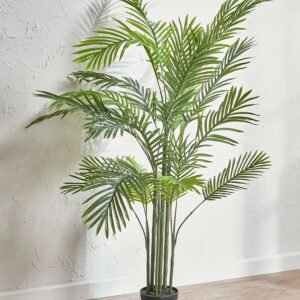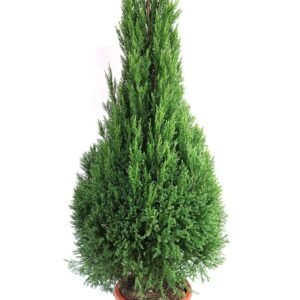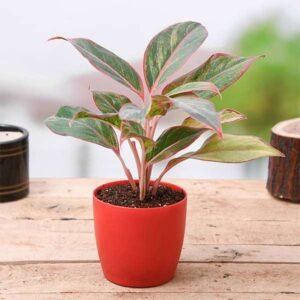Description
The Ixora plant, commonly known as West Indian Jasmine, is a vibrant and evergreen shrub that has found a cherished place in Singapore’s gardens, parks, and roadside landscapes. With its lush foliage and eye-catching blooms, the Ixora is more than just an ornamental plant—it is a symbol of tropical vitality and local culture, playing both aesthetic and practical roles in the island’s green infrastructure.
Botanical Profile
Ixora belongs to the Rubiaceae family, which includes other notable plants like coffee and gardenia. There are over 500 species in the Ixora genus, but the most commonly seen in Singapore are Ixora coccinea, Ixora chinensis, and various cultivated hybrids.
This tropical plant is characterized by:
- Glossy, leathery green leaves that are oval and arranged oppositely along woody stems.
- Clustered flowers, known as inflorescences, that resemble miniature fireworks of bright red, orange, pink, yellow, or even white.
- Flowers that are small and tubular, with four petals, and usually bloom in dense, rounded bunches.
- A shrubby growth habit, typically 1 to 2 meters in height, though some species can grow taller.
The Ixora thrives in Singapore’s humid equatorial climate, benefiting from year-round warmth, consistent rainfall, and well-drained, slightly acidic soil.
A Staple of Singapore’s Greenery
Singapore, renowned for its commitment to being a “City in a Garden,” has integrated plants like the Ixora into its landscape design due to their resilience and aesthetic appeal. The plant is frequently seen:
- Lining HDB estates, where it forms neatly trimmed hedges.
- In public parks and nature reserves, like the Botanic Gardens and Gardens by the Bay.
- As a border plant along roadsides, pedestrian walkways, and in roundabouts.
- In private gardens, where homeowners enjoy its year-round blooms and low-maintenance nature.
Ixora’s ability to flower consistently and respond well to pruning makes it ideal for urban landscaping. It helps soften the hard edges of concrete structures and roads, contributing to Singapore’s lush and verdant appearance.
Cultural and Symbolic Significance
Beyond its physical beauty, the Ixora holds cultural significance in various Asian traditions, including in Singapore’s multiracial society.
- In Hindu culture, the Ixora flower is considered sacred and is often used in religious offerings and rituals. Its bright red blooms symbolize spirituality and purity.
- In Chinese communities, the vibrant red hue is associated with good fortune, joy, and celebration, making it a popular plant during festivals like Lunar New Year.
- In traditional Malay medicine, parts of the Ixora plant have been used for their purported medicinal properties, including treatments for skin ailments and digestive issues.
Ecological Benefits
Ixora does more than just beautify Singapore—it contributes to the city’s ecological health:
- The plant attracts pollinators, including butterflies and bees, especially during early morning hours.
- Its dense growth provides shelter for small birds and insects, contributing to urban biodiversity.
- The continuous blooming cycle helps support pollinators year-round, a vital function in an environment with limited natural forest patches.
Moreover, because the Ixora is drought-tolerant once established, it is well-suited to Singapore’s climate resilience efforts, particularly in periods of less rainfall or high temperatures.
Varieties and Hybrids in Singapore
Thanks to its popularity, horticulturists in Singapore have introduced numerous Ixora varieties. Some common and striking types include:
- Ixora ‘Super King’ – Notable for its large flower clusters and bright red hue.
- Ixora ‘Dwarf Yellow’ – A compact variety perfect for small garden spaces, producing sunny yellow flowers.
- Ixora ‘Pink Malay’ – A delicate pink cultivar widely used in residential landscaping.
- Ixora ‘Sunkist’ – An orange-flowered variety that stands out in mixed-plant displays.
Nurseries across the island often stock cultivated hybrids tailored for size, bloom density, and color vibrancy, offering choices that fit diverse landscaping needs.
Care and Maintenance
The Ixora plant is relatively easy to grow, which adds to its widespread use. In Singapore, gardening enthusiasts and professional landscapers follow these basic care tips:
- Sunlight: Prefers full sun for optimal flowering, though it tolerates partial shade.
- Watering: Requires regular watering, especially in the first few months after planting, but is moderately drought-tolerant thereafter.
- Soil: Best grown in well-drained, slightly acidic soil. In alkaline soil, chlorosis (yellowing leaves) can occur.
- Fertilization: Benefits from monthly feeding with a balanced fertilizer to encourage continuous blooming.
- Pruning: Should be pruned regularly to maintain shape and stimulate new growth.
Regular maintenance ensures that Ixora plants remain compact and vibrant, blending neatly into the structured aesthetic of Singapore’s cityscape.
Challenges and Solutions
Like all plants, Ixora can be vulnerable to certain pests and diseases, such as:
- Aphids and mealybugs – Small sap-sucking insects that can weaken the plant.
- Leaf spot and fungal infections – Caused by overwatering or poor air circulation.
Integrated pest management, including natural insect predators and neem oil sprays, is often used in Singapore’s environmentally conscious gardening practices. Proper spacing and pruning help prevent most fungal issues.
Educational and Community Engagement
In Singapore, Ixora also plays a role in environmental education and community engagement:
- School gardening programs often include Ixora in their horticultural learning due to its simple care and quick reward in flowering.
- Community gardening initiatives across HDB neighborhoods use Ixora to teach green skills and promote bonding through gardening.
- Workshops at places like HortPark frequently feature Ixora as an example of sustainable urban flora.
Its ease of propagation through stem cuttings allows it to be shared and grown among residents, making it a plant of connection and accessibility.
Conclusion
The Ixora plant, with its brilliant blooms and robust nature, is more than just a decorative shrub in Singapore—it is a symbol of tropical resilience, cultural richness, and sustainable urban living. Whether growing in a roadside planter, a school garden, or a temple courtyard, Ixora exemplifies how a single species can harmonize nature, culture, and city life.
As IndIa continues to green its urban spaces, the Ixora remains a faithful companion in this journey—one cluster of bright blossoms at a time.






 Aglaonema Lipstick Plant
Aglaonema Lipstick Plant  Aglaonema siam aurora - Plant
Aglaonema siam aurora - Plant 

Reviews
There are no reviews yet.